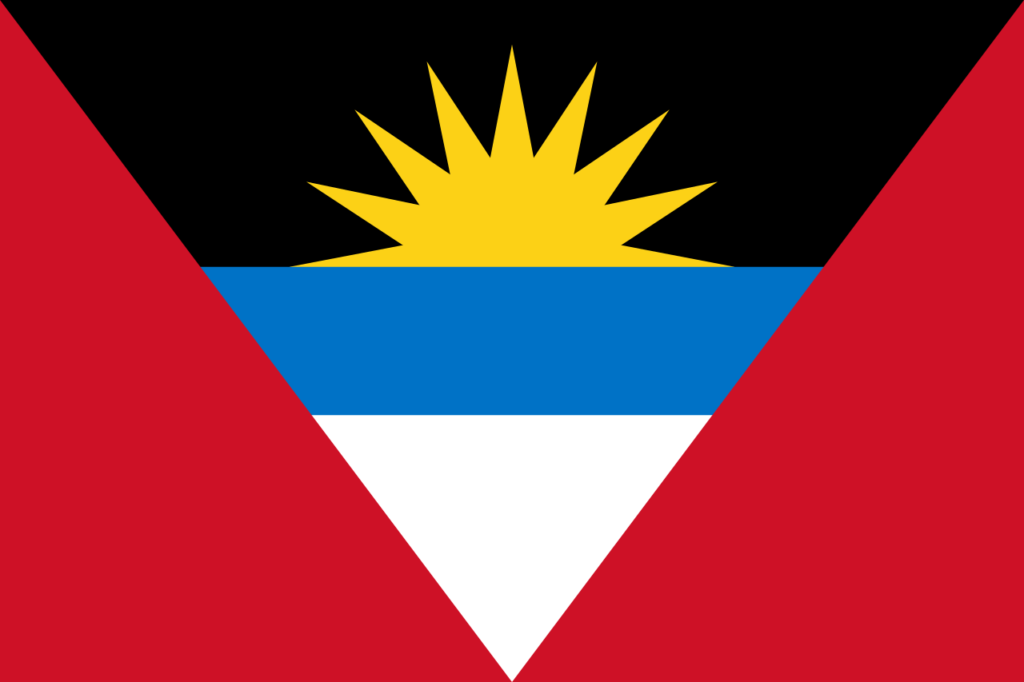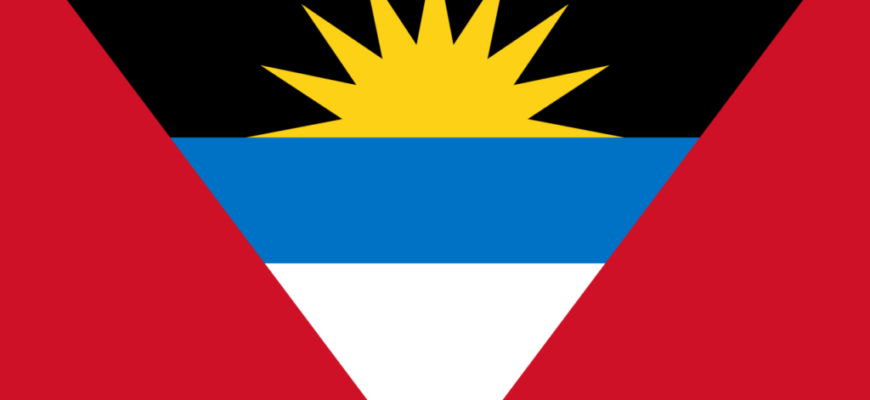
History of the Flag
Antigua and Barbuda is one of the youngest sovereign nations on our planet. It gained independence from Britain in 1981, later than it adopted the modern form of the flag.
The flag was adopted in 1967.
The modern form of state symbols was selected from more than 600 variants. The selection committee was chaired by the «Provisional Government of Resistance», the parallel governing bodies of the country, as opposed to the British-affiliated leadership, which many historians consider a puppet regime.
The winner of the flag contest was sculptor Reginald Samuel. He did not claim the copyright to his creation — the state did not pay a penny for the flag.
Flag description
The canvas of the flag has a proportion of 2:3 and consists of many elements filled with important symbolism for the state. The presence of the rising sun in the center of the cloth, against a black (people) sky, signifies the beginning of a new era for the country. Beneath the sun there is the sea and white sand, an association with an island, tourist country.
The sea, sand and sun form the letter «V» — means the symbol of victory. The struggle for their rights and independence are of great importance for this African country. The tumultuous events of the struggle for sovereignty are vividly expressed in the letter «V».
All of these symbols are set against a background of red cloth.
Meaning of the colors of the flag
Present in this color palette is:
- Red is a symbol of the energy of a people who, under the oppression of England, lived in the status of a colony. Red takes up about 50% of the flag, which also has symbolism in this proportion.
- Black — indicates the skin color of the resident population. The country is predominantly inhabited by dark-skinned people, which is displayed on the flag.
- Blue — the Caribbean Sea, which washes the island state. Also, it denotes hope and equality of all before the law and each other.
- White is the color of sand, recreation and tourism.
- Yellow — sunshine, which emphasizes the desire for change and a new independent era in the life of the country.
General information about Antigua and Barbuda
| Official language | English |
| Capital | St. John’s |
| Territory | 440 km2 |
| Population | 93,581 people |
| Currency | Eastern Caribbean dollar |
| Phone Code | +1-268 |










Как Алексей Воронцов, я хотел бы отметить, что флаг Антигуа и Барбуды является ярким символом духа этой карибской нации. Его дизайн, с триколором красного, синего и черного, отражает культурное наследие и природные богатства страны. Красный цвет символизирует мужество и стремление к свободе, синий — океан, который омывает острова, а черный — африканские корни народа. Этот флаг не только служит государственной эмблемой, но и является источником гордости для всех граждан. Интересно было бы узнать больше о истории его создания и о том, какие события повлияли на его окончательный дизайн.
I love the flag of Antigua and Barbuda! The colors are so vibrant and really represent the island’s culture. I remember my trip there, and seeing that flag flying high made me feel so connected to the place. Can’t wait to go back someday!
I absolutely love the Flag of Antigua and Barbuda! It’s such a vibrant representation of the island’s culture. I remember visiting Antigua and seeing it waving proudly at the beach—it really captured the spirit of the place! Can’t wait to go back!